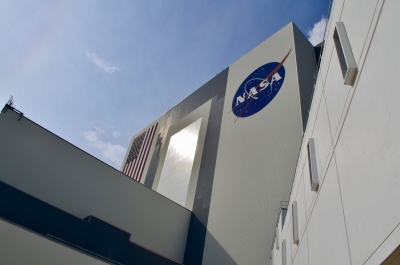New Delhi: In a first, NASA has used laser communication technology to send 4K video streams from an aircraft to the International Space Station (ISS) and back, a feat that will pave the way for providing live video coverage of astronauts on the Moon during the Artemis missions.
While the US space agency has historically relied on radio waves to send information to and from space, it for the first time streamed 4K video footage from an aircraft to the ISS and back using optical or laser communications.
Laser communications are 10 to 100 times more data faster than radio frequency systems as they use infrared light to transmit.
Led by a team of engineers at NASA’s Glenn Research Center in Cleveland, the feat was achieved by installing a portable laser terminal on the belly of a Pilatus PC-12 aircraft, which flew over Lake Erie sending data from the aircraft to an optical ground station in Cleveland.
From there, it was sent over an Earth-based network to NASA’s White Sands Test Facility in Las Cruces, New Mexico, where scientists used infrared light signals to send the data, the agency said.
NASA noted that the signals travelled 22,000 miles away from Earth to NASA’s Laser Communications Relay Demonstration (LCRD), an orbiting experimental platform.
The LCRD then relayed the signals to the Integrated LCRD LEO User Modem and Amplifier Terminal (ILLUMA-T) satellite that was mounted on the ISS, which then sent data back to Earth.
The signal could penetrate cloud coverage more effectively with the help of High-Rate Delay Tolerant Networking (HDTN) — a new system developed at Glenn.
Daniel Raible, principal investigator for the HDTN project at Glenn called it a “tremendous accomplishment”.
He noted that future experiments can “now build upon the success of streaming 4K HD videos to and from the space station”.
This will enable future capabilities, “like HD video conferencing, for our Artemis astronauts, which will be important for crew health and activity coordination”, Raible said.





































